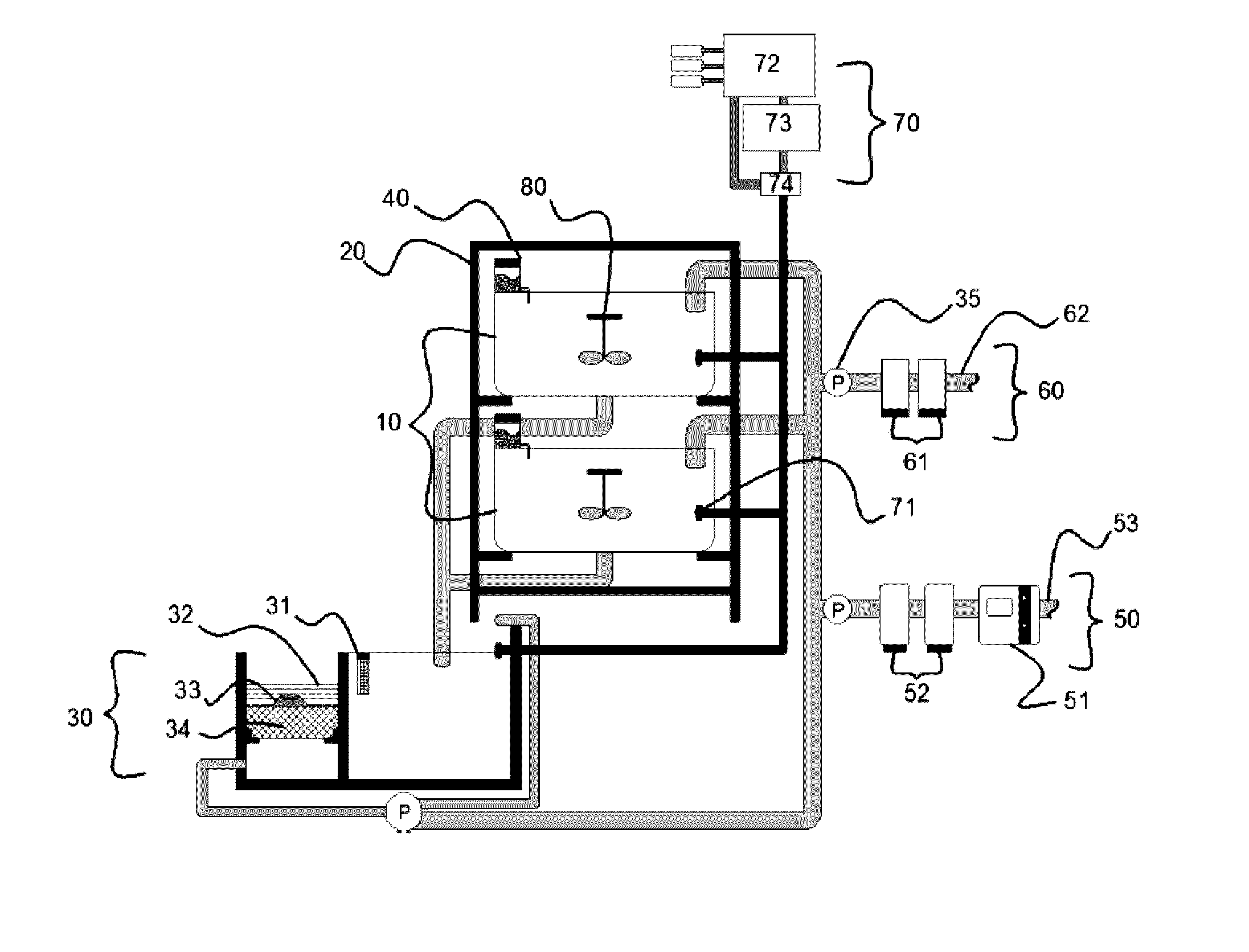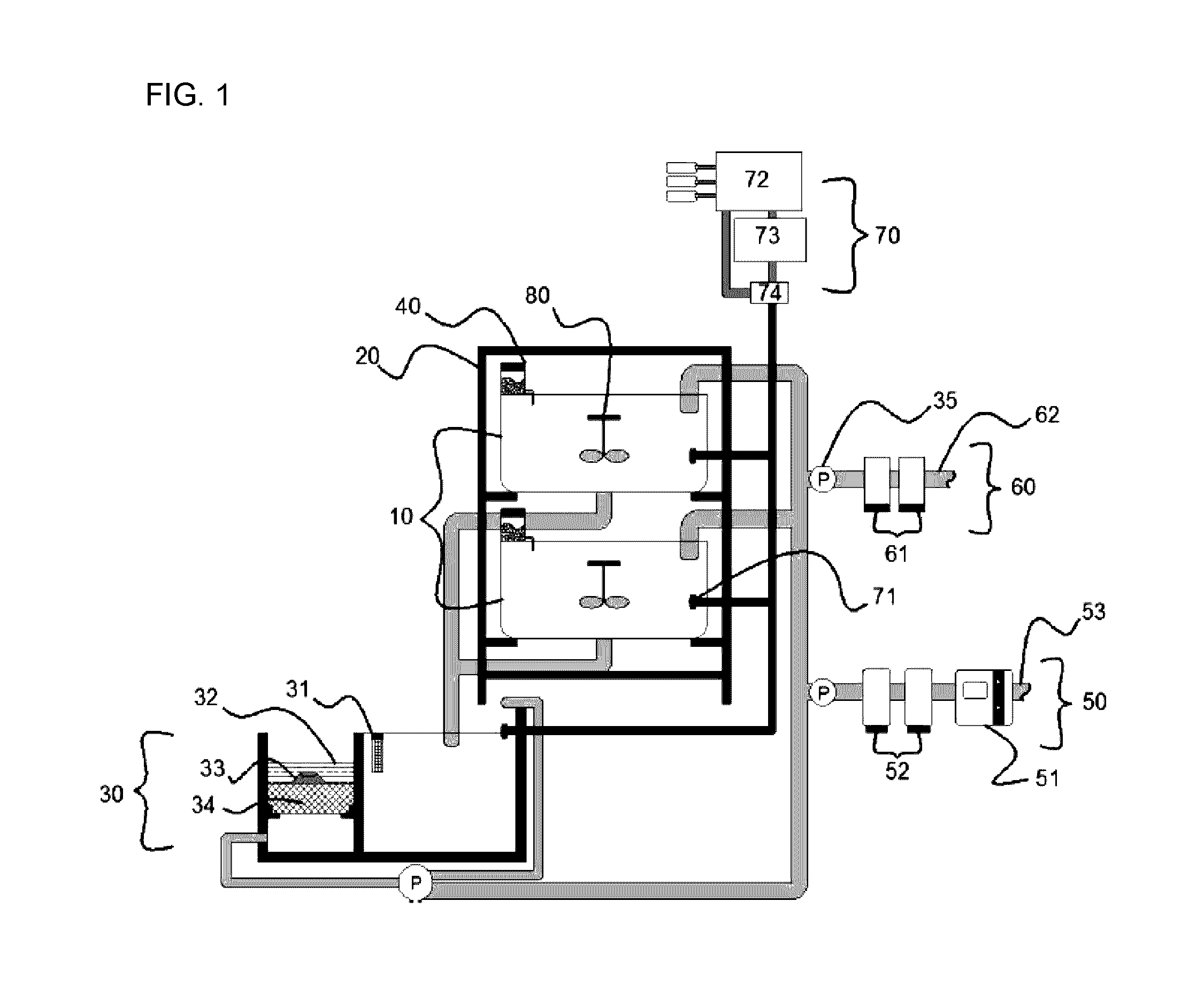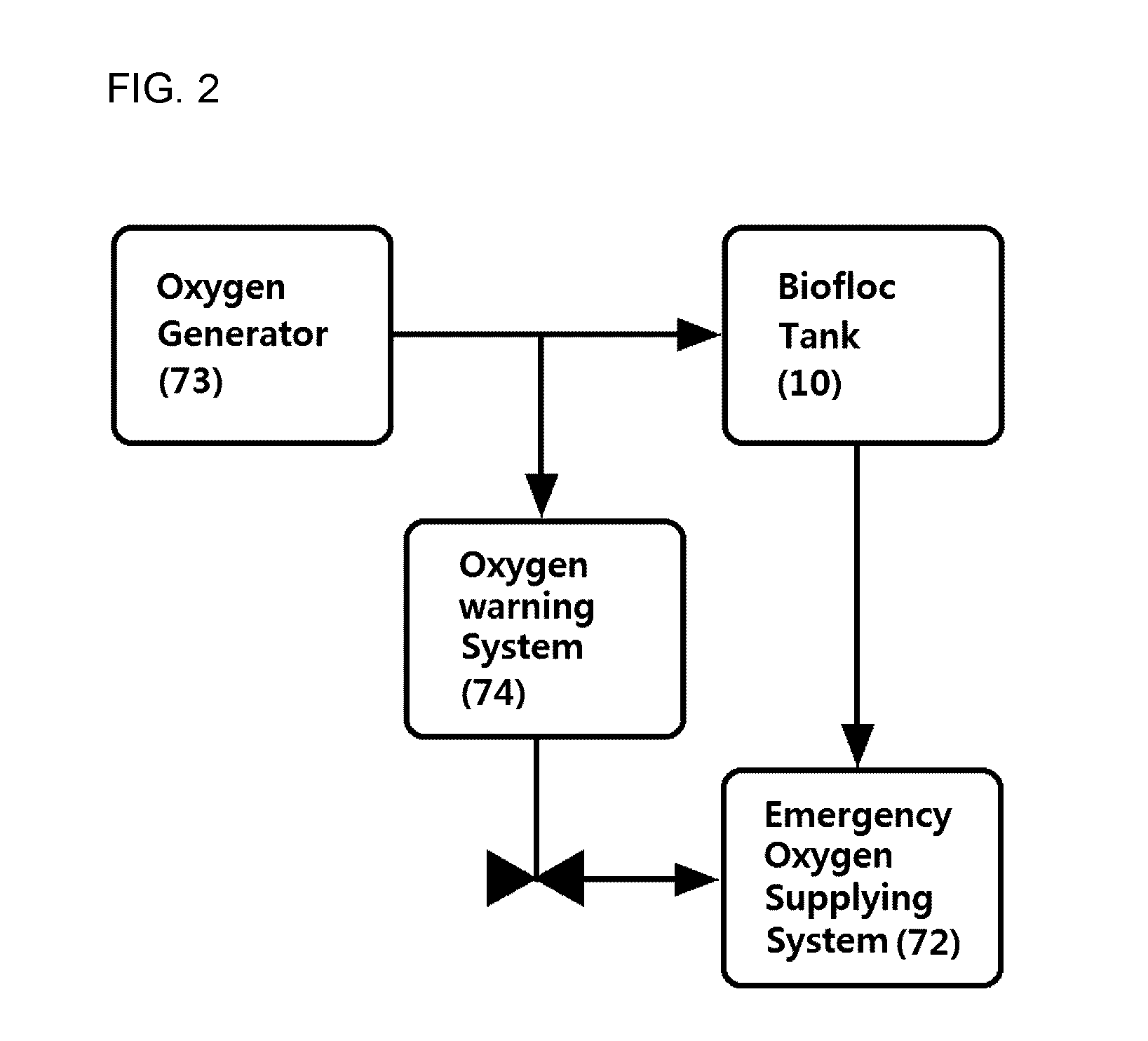Inland aquaponics system using biofloc technology
a biofloc technology and aquaponics technology, applied in biological water/sewage treatment, horticulture, agriculture, etc., can solve the problems of high cost of treatment of these waste products, insecure food safety, and inability to grow aquatic species in aquacultures normally, so as to facilitate the efficient use of limited space of culture area, reduce production cost, and maximize production efficiency
- Summary
- Abstract
- Description
- Claims
- Application Information
AI Technical Summary
Benefits of technology
Problems solved by technology
Method used
Image
Examples
Embodiment Construction
[0041]I. The Biofloc System
[0042]The biofloc system of the present invention comprises: a structural frame having a plurality of floors formed in a predetermined size and depth; and a tank frame (20) having a biofloc tank (10) and a reservoir tank (30) in connection with a drainage pipe formed in the tank, an automatic feed supplying system (40), a reservoir cooling system (50), a reservoir heating system (60), an air supplying apparatus (70), and agitating system (80).
[0043]1. The Biofloc Tank
[0044]FIG. 1 depicts an embodiment of a biofloc system in accordance with the current invention. The biofloc tank (10) of the present invention is provided for the biofloc aquaculture, which is made of fiber glass as a main supporting material which does not elute biologically harmful material and is corrosion resistant. The biofloc tank (10) of the present invention is a plant structure with oxygen or air elevation system.
[0045]The size of the tank is desired to be 5000 L×1,500×1,00 (700) Hmm...
PUM
 Login to View More
Login to View More Abstract
Description
Claims
Application Information
 Login to View More
Login to View More - R&D
- Intellectual Property
- Life Sciences
- Materials
- Tech Scout
- Unparalleled Data Quality
- Higher Quality Content
- 60% Fewer Hallucinations
Browse by: Latest US Patents, China's latest patents, Technical Efficacy Thesaurus, Application Domain, Technology Topic, Popular Technical Reports.
© 2025 PatSnap. All rights reserved.Legal|Privacy policy|Modern Slavery Act Transparency Statement|Sitemap|About US| Contact US: help@patsnap.com



